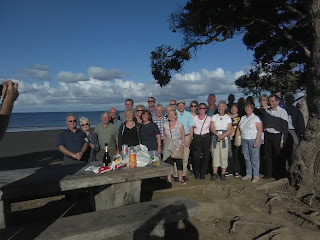Scandinavian Discovery Lilliehammer, Norway 20/7
Tuesday 20th July
Lillehammer, Norway
Lilliehammer - is a town and municipality in Oppland county, Norway, globally known for hosting the 1994 Winter Olympics. It is part of the traditional region of Gudbrandsdal. The administrative centre of the municipality is the town of Lillehammer. The population of the town of Lillehammer is approx 21,000. The city centre is a late 19th century concentration of wooden houses, which enjoys a picturesque location overlooking the northern part of lake Mjøsa and the river Lågen, surrounded by mountains.
The area has been settled since the Norwegian Iron Age. It is also mentioned as a site for council in 1390. It had a lively market by the 1800s, and obtained rights as a merchant city on 7 August 1827, at which point there were 50 registered residents within its boundaries.
The town of Lillehammer was established as a municipality on 1 January 1838
Mora
There are signs of human activity in the surroundings of Mora dating from 4000 B.C. The earliest found buildings in Mora are from the 7th century. In late 1520, Gustav Vasa stopped in Mora, in order to organize a rebellion against the Danish troops which occupied Sweden. The citizens of Mora first declined to help Gustav Vasa, but later changed their minds and sought Gustav Vasa when we was about to cross the Norwegian border. According to the legend two men from Mora (Lars Jakobsson and Engelbrekt Jonsson) caught up with Gustav Vasa in Sälen and told him his people would now fight with him. The rebellion managed to overthrow the Danish government in Sweden and Gustav Vasa was installed as King of Sweden. During the 18th century the area around Mora was struck by famine, and many citizens abandoned their homes. Most went to Stockholm and southern Sweden where they learnt new craftsman skills. Returning to Mora they used their new knowledge to build up new industries. During the end of the 18th and beginning of the 19th century, cottage industries of clocks,sewing machines, knives and water taps were important to the economy.
There are signs of human activity in the surroundings of Mora dating from 4000 B.C. The earliest found buildings in Mora are from the 7th century. In late 1520, Gustav Vasa stopped in Mora, in order to organize a rebellion against the Danish troops which occupied Sweden. The citizens of Mora first declined to help Gustav Vasa, but later changed their minds and sought Gustav Vasa when we was about to cross the Norwegian border. According to the legend two men from Mora (Lars Jakobsson and Engelbrekt Jonsson) caught up with Gustav Vasa in Sälen and told him his people would now fight with him. The rebellion managed to overthrow the Danish government in Sweden and Gustav Vasa was installed as King of Sweden. During the 18th century the area around Mora was struck by famine, and many citizens abandoned their homes. Most went to Stockholm and southern Sweden where they learnt new craftsman skills. Returning to Mora they used their new knowledge to build up new industries. During the end of the 18th and beginning of the 19th century, cottage industries of clocks,sewing machines, knives and water taps were important to the economy.
Anders Leonard Zorn - (February 18, 1860 – August 22, 1920) was one of Sweden’s foremost artists who obtained international success as a painter, sculptor and printmaker in etching. He studied at Royal Swedish Academy of Arts in Stockholm, Sweden, from 1875-1880. He travelled extensively to London, Paris, the Balkans, Spain, Italy and the United States, becoming an international success as one of the most acclaimed painters of his era. While his early works were often brilliant, luminous watercolours, by 1887 he had switched firmly to oils. Zorn painted portraits, scenes depicting rustic life and customs. Zorn is also famous for his nude paintings and realistic depictions of water.
The village of Nusnäs, 10 kilometres south-east of Mora, is the place where the Dala Horse is made. These small wooden horses have been around since the 17th century. They are normally painted orange or blue with symmetrical decorations known as kurbits painting. The horses are carved and painted in workshops open for tourists, and you can buy a carving kit of your own or even try to paint one yourself.
The Journey
Our first stop today is at the Siljan Lake at Rattvik, onwards to Nusnas, and the visit to the workshop of Nils Olsson, to see and hear how the Dala Horses are made, onwards to Mora for a visit to Andres Zorn Gallery, time for lunch and then depart for Salen for a toilet break, before starting the climb over the mountains towards Norway (Passports in hand luggage), afternoon stop outside Elverum, before continuing on to Lillehammer and the Radisson Blu Hotel


Comments
Post a Comment